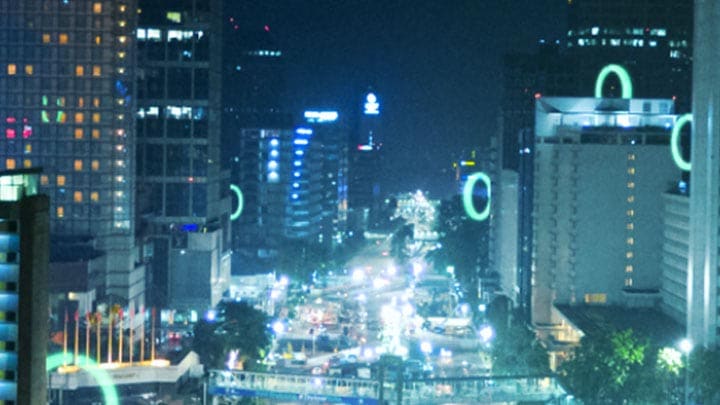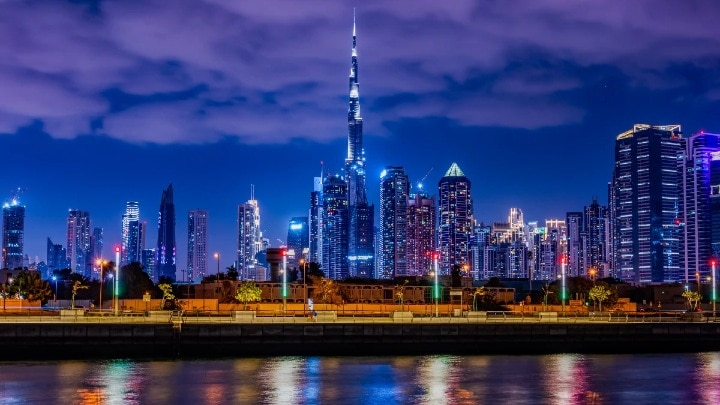September 22, 2021
According to the UN, 70 percent of the world’s population will live in cities by 2050. As part of this, the number of smart cities is expected to grow by double digits over the coming years.
By combining data and digital technology, “smart” cities can improve key quality-of-life indicators by 10 to 30 percent. A critical enabler will be the connectivity needed to bring interactivity to the daily lives of its residents, often via their smartphones.
Cities today face the challenge of swiftly adapting to the demand for denser networks for better connectivity and services. Installing additional network towers is often not a solution due to location constraints, capital expenditures, visual clutter created and the cost to the environment. Also, legacy infrastructure often lacks standardised solutions ready for city-wide WiFi, camera and sensor deployment, hindering future upgrades and add-on.
Offering quick and easy wins, converting existing streetlights to smart poles with enhanced IoT capabilities is a great starting point. Smart poles mark the evolution of streetlights from being a municipal cost liability to a potential revenue-earning connectivity hub. These new-age street poles can turbo-charge a city, converting existing lighting infrastructure into a hub of digital services for citizens.
At Signify, we have pioneered how street lighting technology can radically expand this possibility. BrightSites by Signify, our new end-to-end solution, delivers on this promise, transforming lighting infrastructure into a platform for communication networks and smart city applications. This solution accelerates the deployment of present and future IoT broadband applications such as 5G, WiFi, and smart city services through the existing lighting infrastructure – without compromising the cityscape.
By using smart poles to optimise the city, authorities can reap several benefits – from better transport and eased congestion, smart refuse and recycling, saving electricity, connecting the last mile of a city - the possibilities are broad. Moreover, better connectivity opens access to essential services like better healthcare services or education for developing regions. Consistent connectivity, made possible by smart poles, forms the backbone of any smart city.

The move to becoming a smart city needs to be led by city councils, keeping citizens at the heart of planning. The best approach is to have a vision of tapping into future possibilities, which contrasts with focusing on areas in siloes, limiting the potential reusability of infrastructure such as streetlights. A long-term plan would help form an ecosystem of decision-makers, including the government, telecom, and infrastructure companies, to drive the change. It also encourages adopting innovative lighting solutions like BrightSites, which are configured with a standardised solution ready for city-wide WiFi and can operate in a wide range of environments, allowing for future add-ons and upgrades.
Municipalities or local city councils must lead the smart city agenda. First, municipalities must understand what services are needed to improve the city’s digital attractiveness and quality of life. They then need to build strong partnerships with local governments and the private sector (including communication real estate and lighting solution providers) to form the ecosystem to drive change.
Municipalities also play a crucial role in tapping into government funds for resource availability. The government in the UK, for example, has announced the Future of High Street Funds and the Towns Fund. The focus of these funds includes regeneration and better broadband connectivity. Municipalities must tap into these funds to drive smart city initiatives and work with their partners and local governments.
Many cities with multilayer governance struggle to co-ordinate between multiple stakeholders as aligning various departments and ensuring co-operation is often challenging. However, this can be overcome with a shared vision for making a city smart. Driven by citizen needs, councils (responsible for purchasing and upgrading infrastructure), the telecom department for infrastructure and connectivity, lighting companies with innovative solutions, and the departments responsible for the digital strategy for citizens (Digital, Culture, Media & Sport in the case of the UK), need to form the ecosystem and work closely towards the common goal.
As the population increases, it’s becoming clear that the current urban infrastructure is no longer fit for purpose. Smart poles can help address many critical connectivity issues while offering the opportunity to innovate. Therefore, a clear vision, an ecosystem of decision-makers, including telcos and towers, lighting companies and availability of funds are crucial to ensure the proper infrastructure and build on the momentum.
This article first appeared in IoT Now.
Signify UK&I PR Manager
Nikita Mahajan
Tel: + 44 (0)7459751618
Email: nikita.mahajan@signify.com
Signify (Euronext: LIGHT) is the world leader in lighting for professionals, consumers and the Internet of Things. Our Philips products, Interact systems and data-enabled services, deliver business value and transform life in homes, buildings and public spaces. In 2023, we had sales of EUR 6.7 billion, approximately 32,000 employees and a presence in over 70 countries. We unlock the extraordinary potential of light for brighter lives and a better world. We have been in the Dow Jones Sustainability World Index since our IPO for seven consecutive years and have achieved the EcoVadis Platinum rating for four consecutive years, placing Signify in the top one percent of companies assessed. News from Signify can be found in the Newsroom, on X, LinkedIn and Instagram. Information for investors is located on the Investor Relations page.


December 17, 2024
Transforming Dubai’s iconic buildings with connected lighting from Signify